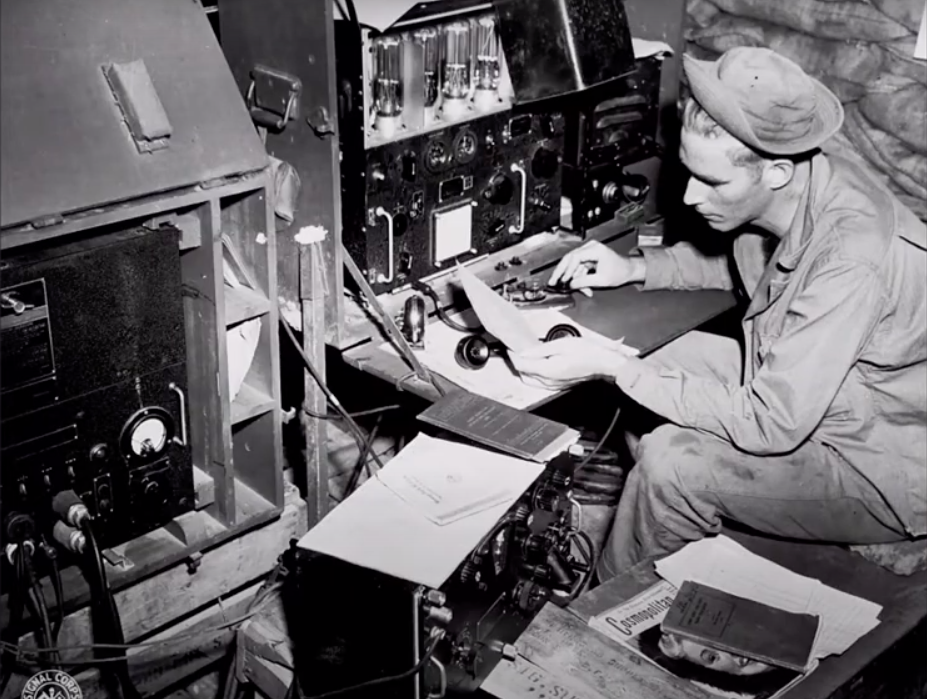Radio Deception
The Signal Company carried out radio deception, known as spoof radio, which involved impersonating radio operators from armored units to send false messages that Allied troops were nearby.

(The Atlanta Constitution, 20 Aug. 2012)
Sgt. Spike Berry describes how radio deceptions created illusions. (Ghost Army Interview, 2006)
German army units gathered 75 percent of their intelligence from radio intercepts. Since most radio traffic consisted of Morse code, Signal Company operators had to learn the precise keystrokes of this deceptive communication method to fool the enemy.
"When sending in code, an individual's way of tapping his dots and dashes can be distinguished as clearly as handwriting."
-Captain Ralph Ingersoll, N.d. (Beyer and Sayles, 2015)

(Photo: National Archives, c. 1944)

Fake radio operator (Photo: U.S. Army Signal Corps, c. 1944)
In December 1944, Operation Kodak, the Ghost Army's only tactical deception carried out completely by radio, aided Allied forces in achieving victory at the Battle of the Bulge.
"Could I have sent just one radio message that changed the tide of battle, where one mother, or one new bride was spared the agony of putting a gold star in their front window? That's what the 23rd Headquarters was all about."
-Sgt. Stanley Nance, Signal Company Special (PBS, 18 June 2013)